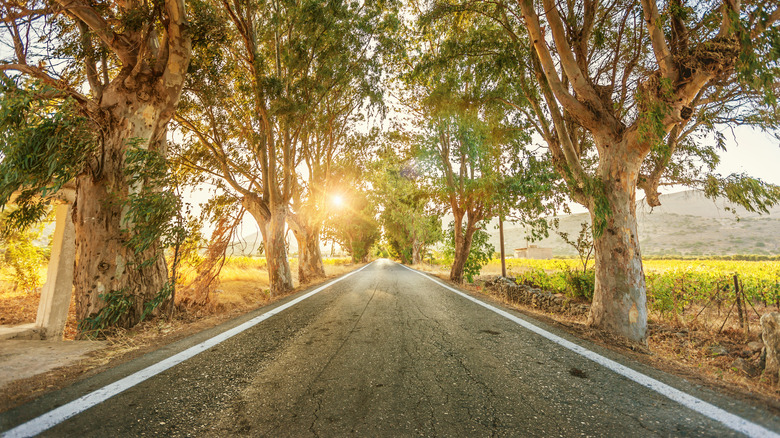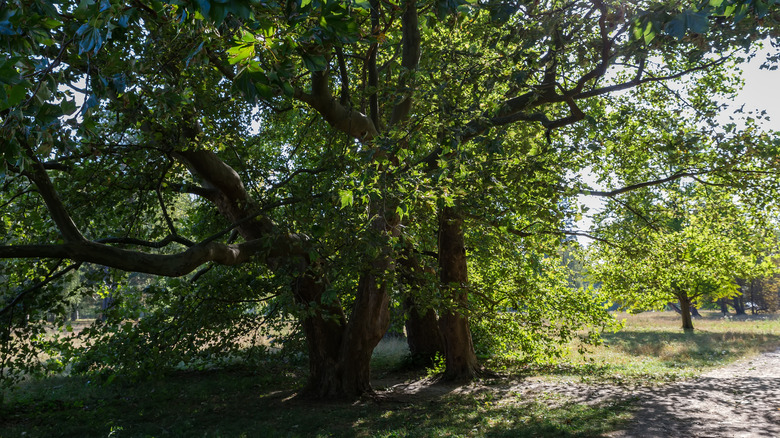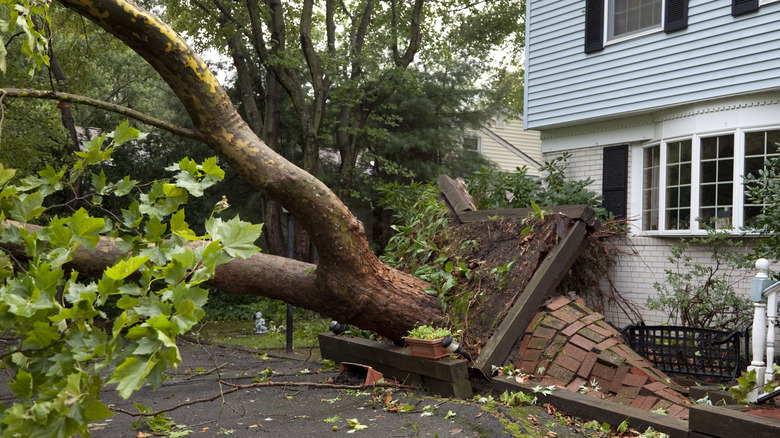The Downsides Of One Of The Fastest-Growing Shade Trees In North America
Since most of North America has warm or hot summers, the cooling shade of tall trees is appreciated. The American sycamore (Platanus occidentalis) is one of the fastest-growing trees you can choose, and you might want to since it's native to North America. However, this plant has a huge downside: it can get out of hand pretty quickly if it's planted in the wrong area. Growing a super tall tree in a short amount of time is a good thing in open spaces, but when you grow it in a small backyard or an urban area, it can cause many problems thanks to massive branches and unruly roots.
Just because a tree poses problems doesn't mean you shouldn't plant it. Growing native trees like the sycamore is great for the environment and is highly encouraged. However, you need to plan ahead and consider the costs before doing so. Avoid planting too close to structures; not only will roots and branches become a problem, but the tree will also drop fruit, which can create a messy landscape.
Sycamore trees demand space
You'll need plenty of space if you want to successfully grow sycamore trees. These trees can grow up to 100 feet tall, and even if they're on the shorter side, you can expect them to grow to at least 40 feet. Sycamore trees can grow more than 2 feet tall yearly, so you should have a fairly shady tree in just five years. This massive growth will require plenty of space to spread out both above and below ground, as its robust root system can become fairly aggressive and may cause damage to sidewalks, foundations, and structures. You risk spending a lot of money on home repairs and tree demolition in the future if you plant too close to your house.
When planting sycamore trees, maintain a distance of at least 15 feet away from your home and nearby structures. If you have a big enough yard to keep them far away from your own house, also be sure they aren't too close to neighbors' houses, fences, or sheds. Sycamore trees have the ability to revitalize poor soils, making them great additions to naturalized areas in need of some TLC. However, they can be quite problematic when you mix them into urban landscapes.
Sycamore trees can be messy
With great height comes great complications. The American sycamore tree is also called the buttonball tree due to the rounded nut-like fruits it produces. These fruits grow all over the tree in groups of seven or fewer. They hold seeds and will drop from the tree each year. If you keep them in an area you want to stay clean, expect to rake or sweep often as the tree drops them. You'll also have to rake leaves each year since they have plenty of them to drop.
It's crucial to plant sycamores away from the home to avoid falling branches. If severe storms or diseases cause branches to fall, they could cause severe damage to your home. Zombie trees are trees that are dying from the inside, and you often don't know it until it's too late. You wouldn't want this to happen to a giant sycamore tree! Keeping these trees far from your home, vehicles, and other expensive property will save you from cleaning up a physical and financial mess.



